|
|
Dogali Obelisk (Also called: Terme Obelisk)
| Present Site: | Former site of "Terme di Diocleziano", Rome In the triangle green zone, South-East of "Piazza della Repubblica" N 41°54'7.8"(41.902167) E 12°29'50.9"(12.497472) |
| Pharaoh: | Ramses II (New Kingdom 19th Dynasty, reigned 13th Century BC) |
| Measurement: | About 5.4 meters high See "About The Obelisk" below for the details. |
| Weight: | Unknown |
| Stone: | Red granite |
About The Site:
This obelisk stands in the triangle green zone, which is the side of former site of "Terme di Diocleziano" (Baths of Diocletian), South-East of "Piazza della Repubblica". Terme di Diocleziano were the largest public baths in Ancient Rome, which was completed in AD 306 by Roman Emperor. The ruin is now used for the Museum (Museo Nazionale Romano) and the church (Santa Maria degli Angeli). The church is small, but has a remarkable arch-shaped ceiling inside, which was designed by Michelangelo.
How To Get There:
We may walk about 300 meters from Termini Station. If we take a Metro Line "A", get off at the first stop "Repubblica" from the Termini Station, then walk about 100 meters.
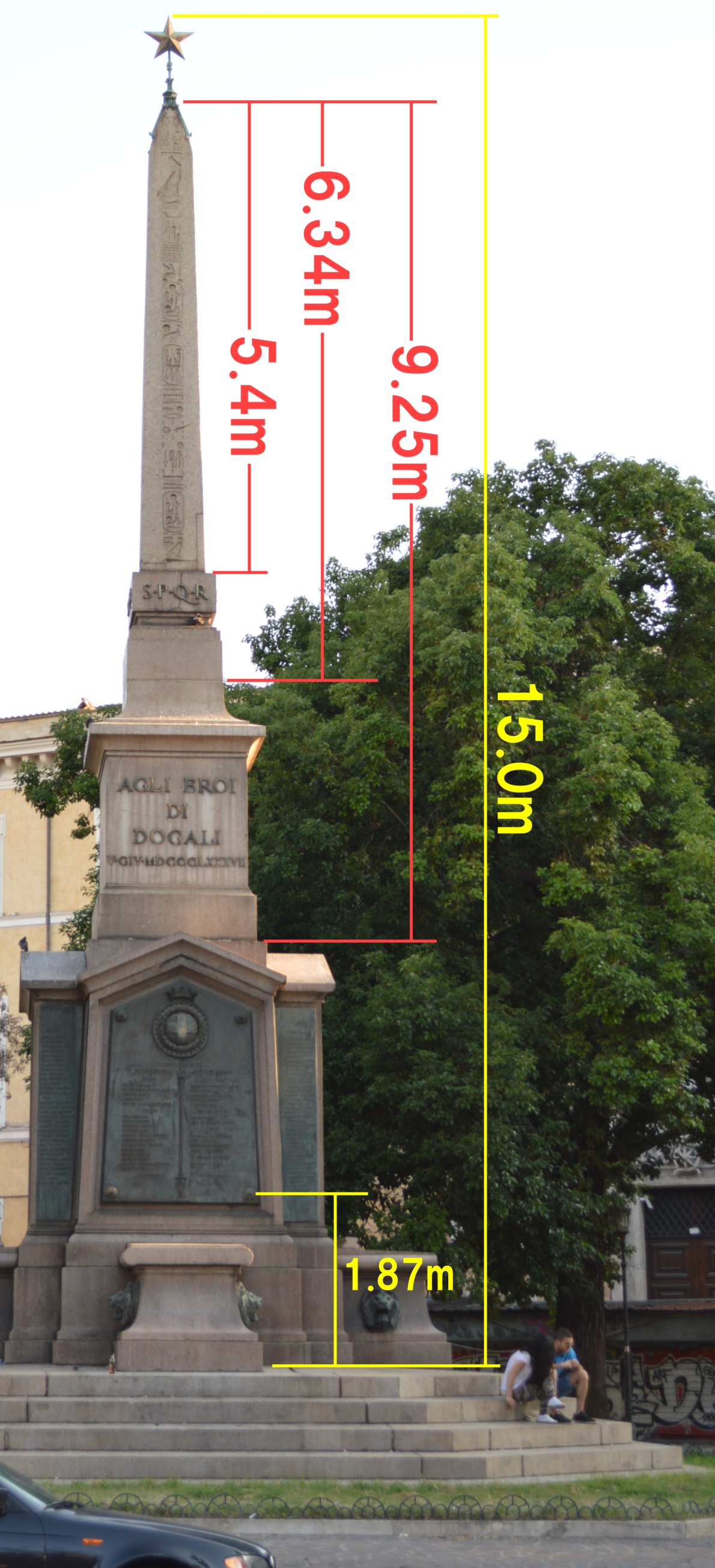 Measurements Measurements
|
About The Obelisk:
After carrying into Rome probably in 1st century, this obelisk was erected at Iseum (the Temple of Isis), which was at the site of Chiesa di Santa Maria Sopra Minerva, where Minerva Obelisk stands now. After that, the obelisk toppled and was buried in the ground.
After this obelisk was discovered by Roman archeologist, Rodolfo Lanciani and his team in 1883, the inscription was immediately deciphered. According to this, this was originally erected at the Sun Temple in Heliopolis by Ramses II. Also, it was known that the another pair was already (in 1790) brought to Boboli Gardens in Florence.
After discovery, the excavated obelisk was left as it was. 2 years later, Italian Kingdom caused the war between Ethiopia Empire, with the aim of expansion into Ethiopia (the Eritrea war). During the war, in January 1887, all 548 soldiers of Italian squad were killed by the Ethiopian troop at the Battle of Dogali. For a memorial of Italian victim, and in order to quell the Italian people's sadness, it was decided that this obelisk was erected. The location was selected in front of "Stazione di Termini" (Termine Station) in Rome. The bronze plate written "AGLI EROI DI DOGALI" (To heros of Dogali) was posted, and the names of the Italian soldiers who were killed were inscribed on the pedestal, and the star "Stellone d'Italia", the Italian symbol was put on the top. The obelisk was completed on June 5, 1887. Therefore, this obelisk is known Dogali Obelisk.
In connection with the number of dead soldiers, the square in front of the Station was then named "Piazza dei Cinquecento" (500 People Square).
When the "Piazza dei Cinquecento" was remodeled in 1924, in the next year the obelisk was moved to the current site.
Discussion on the Measurement: The height of this obelisk varies by the sources, say 6.34 (*1) meters, 9.25 (*2) meters, etc. By my looking, I felt it would be less than 6 meters for the obelisk itself, and more than 10 meters including pedestal. Hence such figures must be skeptical.
I calculated by my actual measurement of pedestal portion and the picture, it would be only 5.4 meters from the top of pyramidion (quadrangular pyramid) (excluding the "Stellone d'Italia") to the above of pedestal where the letters of "SPQR" is written, and about 15 meters in total from the top of "Stellone d'Italia" to the above of steps at the bottom (see Picture left). Well then, what is 6.34 meters (*1)? I suppose ..... There is a joint line between the "SPQR" stone and the pedestal with "AGLI EROI DI DOGALI" plate. The length from that joint line to the top, excluding the metal star would be 6.34 meters. In other words, 6.34 meters was the original length before it was erected as a soldiers memorial. 9.25 (*2) meters would be to the bottom of the base stone with "AGLI EROI DI DOGALI" plate.
(*1) Wikipedia "List of obelisks in Rome".
(*2) The Obelisks of Egypt, Labib Habachi.
The hieroglyph, one line each, is inscribed on all 4 faces. Since that is well-preserved, the horus name, coronation name and birth name of Ramses II is clearly confirmed. However, the sentence is interrupted as the lower portion of obelisk is missing.
Notes For Pictures:
Since here is not a tourists' spot, the obelisk stands lonely. But this is a resting place for citizens, like the joggers and people dressed casually.
the obelisk doesn't stand at accurate north-south-west-east direction, the captions below photos indicate northwest, southwest, southeast, and northeast.
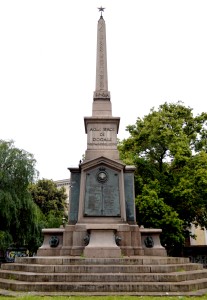
Northeast Side May 2, 2016 |
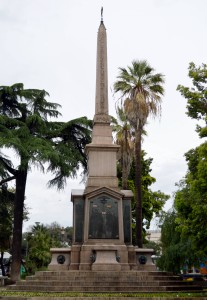 Northwest Side August 10, 2014 |
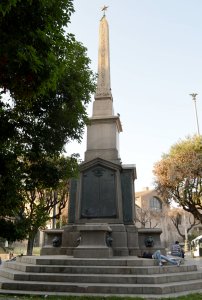 Southwest Side May 2, 2016 |
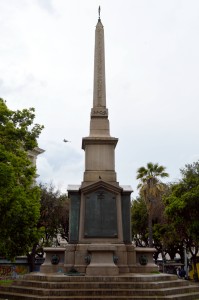 Southeast Side May 2, 2016 |
|||
by Hiroyuki Nagase (For high definition image, please click the picture) | ||||||
Copyright Hiroyuki Nagase nagase@obelisks.org and Shoji Okamoto okamoto@obelisks.org